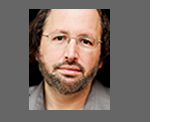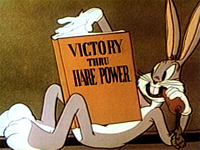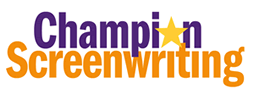 |
ZEN IN THE ART OF THE FINAL POLISH
NA NA NA NAAAAA WAAAH WAAAH WAAAAAAH: My life as a script consultant is pretty boring. Download script, forward it to Maziar at scriptcopier.com to print, pick it up, log into PayPal, suck all of the money into my bank account except for $20 for a half.com impulse buy (Tombstone director's cut for 4.99, I'm your huckleberry!), email client to ask for more time, watch aforementioned used movies over the weekend, do notes on Tuesday afternoon and Wednesday morning. Repeat as necessary. But there was one time that my profession got me into a situation fraught with danger, when I was being called a yellow-belly coward and like the hero in Kenny Rogers' “Coward of the County,” I learned sometimes you have to fight when you're a man. I was at a Screenwriting Expo networking party and I stumbled into a conversation with an hombre writer and his posse and one of them recognized me, spat some chaw on the ground (okay, that part's made up) and quipped: “Mercurio, what's up with charging a grip of cash to read a script?” I laughed it off, realizing that script consultant is an oft-vilified profession. I stood toe-to-toe to with these strangers and we ended up talking about Malcolm Gladwell's book Blink. A quite educated bunch of tough guys, eh? The best-selling book details how humans have an amazing ability to “thin-slice,” to discern a surprisingly large amount of information from the first split-second they see something. Well, the rabble-rouser that I am, I told these guys that this concept applies to screenplays – that 99% of the time you can tell a bad script/storyteller from the first page. They shrugged it off. And then I said: “Actually, from the first few lines.” You could have heard a brad drop. “Is that so?” growled the writer/ruffian (wruffian for short). Before I could even take another swig of my Diet Coke, he whipped out his laptop. His posse was positioned behind him. Like the clicking of spurs, the whirring of a pistol barrel spinning around, his computer booted up, chastised him for not shutting down properly last time, displayed a cute little rocking horse icon and asked him for his password. BAM! His screenplay was up in Final Draft and the computer was shoved in my face. In true Blink-like fashion, an epiphany hit me hard: This guy hadn't figured out how to clean his computer's non-glare screen. Then I looked at the words… “FADE IN” was right-justified and followed by a period. Two words, two mistakes. First sentence: passive voice and a ridiculously overly detailed cheat in describing the main character. Second sentence: past tense, confusing use of “as” (as/while are scary words in screenwriting), an adjective and adverb that could have been eliminated with a stronger noun and more specific verb, several wasted words and a dangling widow. The first dialogue has a red-faced coach yelling, “What the hell?” with the parenthetical: (Angry). 'Cause, you know, it wasn't clear. The next line of dialogue is clunky exposition and then there is even more exposition in the action description that is not only unnecessary but impossible to convey on screen. And then after more past tense and impossible-to-know information, we are told it's raining. Crazy idea: Maybe put that up front. As I shot down (hey, I gotta stick with gunslinger analogy) the 15-20 mistakes (some subjective, most not), I saw the wruffian's posse slowly move from behind him to behind me. One of his sidekicks said to his boss: “Looks like you got some rewriting to do, Jefe.” The wruffian closed his laptop and galloped off into the horizon (the William Goldman Guest of Honor session). And he didn't even have a horse. Maybe your screenplay probably doesn't have THIS many problems, and it probably feels like my point is simply reread Strunk and White or hire a proofreader, but I am trying to lead you to something beyond mere nitpicking. 
In his Zen in the Art of Archery Eugen Herrigel discusses a Japanese archery master under whom he studied. His master made him do the simplest actions by rote until, after years, it became a subconscious process and tapped into proficiency he never imagined. If you get into the habit of poring over every word of your script, the attention to detail starts as proofreading but it morphs into storytelling craft. We were workshopping a scene in Killer Screenwriting class (Now A-List Screenwritng: The Immersion) in which a character looks at an animal cage and has an epiphany that she could put a human in the cage (I am intentionally leaving out all of the context). So she had a line something like: She looks at the cage, thinks for a moment, and then a devilish grin overcomes her face: She has an idea. Maybe the little “cheat” (something we can't see or hear) at the end, “she has an idea,” is my addition, but let's talk about the line for a moment. If screenplays are only what we see and hear, then all we have in this case is a person looking at a cage. Maybe we can also find an action that looks like thinking. So the academic fix is: She stares at the cage, furrows her brow, and suddenly a devilish grin overcomes her. (Do you need the word “face”? Whether or not you do, these are the kind of nitpickings you have to do on your final draft.) Now if the next scene cuts to her frantically cleaning out the cage, we assume that she is acting on an idea that we will eventually see in action. But what about the “cheat” that “she has an idea”? Technically, we can't see or hear that. Or can we? Is it possible that an actor in close-up can convince us that he or she is thinking about something or just discovered something? Yeah, probably. So, never being a person for following rules or prescribing them, I am going to say that some of these “cheats” are acceptable in a script as long as certain principles aren't violated. If the intention is clear; if the action description is tight and efficient and without redundancy; if the beat necessarily must be described in action description and it serves to give information to the reader that would also be immediately available to the viewer; and if the script hasn't already bogged down the reader with a million “cheats,” then I don't see it as the end of the world, in this situation, to use one of these cheats: She has an idea. But because you are using the “cheat” to define the small beat of “she has an idea,” then “the devilish smile might” be redundant because that is a visual way of trying to show the idea. Or the “furrows her brow” might be redundant because the “cheat” is now part of the progression. So instead of She stares at the cage, furrows her brow, and suddenly a devilish grin overcomes her: She has an epiphany. I would suggest one of these options: She stares at the cage and a devilish grin overcomes her: She has an epiphany. I still think a cut that abruptly shows her resulting actions based on this “idea” is still an essential part of the solution to making this clear. So if she is immediately cleaning out the cage in the next scene/shot, we know that she is planning on using the cage for someone or something. We have used good ol' editing techniques, specifically the Kuleshov Effect, to create the idea of an idea. She looks at the cage… cut to… she is cleaning out the cage… A light bulb goes off in our head… she has a plan to use the cage. Good enough, right? Sure. But is good enough good enough? I say no. Maybe my background as a filmmaker and director makes me have higher expectations, but just because the dramaturgical needs of a scene are met doesn't mean you are done. Can we aspire or ponder to aspire to find moments that would be cinematic and clever? Could we find a way to do this scene that would have the actor (and maybe the DP and gaffer and foley artist) excited to be part of it? Well, let's just sit with this moment a bit longer and see what we come up with. This idea of a light bulb keeps coming up and we assume that the furrowing of her brow is some sort of indecision or mental wrestling. So is there a way that light can play in to the decision process, and is there a cinematic way to create the indecision of her thought process? What about something like this ... She looks at the cage for a bit too long, shakes her head no. Walks out of the room. Turns off the light. It's pitch black. Her footsteps fade… But then they become louder again… the light flickers back on… She trots up to the cage; stares at the bars. Grabs them, shakes them: They don't budge. And then …wow… (Okay, my one cheat to build suspense) she turns sideways and tries to fit herself through the bars. They catch her hips. She pushes harder but can't get through. (Or take out the other cheat for one here.) It passes her test. She steps back from the cage. A devilish grin appears on her face. (Although I think the scene would end on her face.) She walks out. Here, her movement away and shutting out the light shows her initial rejection of the/an idea, but then the sound of the footsteps getting louder hint that the idea is coming back – and then there is literally a light-bulb moment. And then we get to further see her thought process as she wrestles with the cage. And the specific idea of “this could cage a human” becomes explicit when she tries to squeeze her own body through the bars. We used, sound, light, blocking, setting, movement as well as the actress's face to make the moment more clear and, more importantly, more cinematic and visual. I stress the need for brevity and efficiency in my class, so I don't think that the answer is always in expansion. Sometimes cutting is the right choice. And in fact, the original one sentence–even without the cheat–may be the right answer in some contexts. However, this script happened to be a quirky chamber–play sort of dramedy, so I thought it was appropriate to push the story as much as possible to shy away from talking heads and to take as many opportunities to use sound and sight and not just reaction shots to make the movie, well, a movie. And I thought the cleverness of her testing the bars–with or without the leaving/entering—was the sort of idiosyncrasy that would help define the script's tone/voice. Your final polish must begin with poring over every word in your script and making sure that every word is necessary and that every beat is communicated in an efficient way. But if you haven't done it at anytime earlier in the writing process, look at every beat in your script and sit with it for a few minutes and ask yourself if some time spent could turn the unimaginative into clever, the “pretty good” into “damn good”, the functional into cinema and the okay into wow. Often, there is no improvement. But sometimes you will come up with something just a little bit better. But if you do this enough times, you will raise your expectations and you will find yourself unconsciously writing better description and, lo and behold, better dramatic action. |
|||||
 |
||||||
 |
||||||

| Champion Screenwriting's Craft & Career, a free monthly newsletter |


